
Like most films based on a book, it will adapt the materials found in the source material and condense it so it can fit within a timeframe of approximately two hours. With the 1995 film, there's no deviation to this standard.
The Ghost in the Shell movie takes from the manga the primary story found within it regarding the Puppeteer (now called the Puppet Master) and strips out pretty much everything else. With it you get a futurist tale of robots, cyborgs, political scandals, and action that was seen in the pages of the book, but tinted with a very serious tone; leaving behind all of the silliness the manga tried to do to balance the out the mood.

Take Kusanagi for example on a superficial level where she looks older than she did in the manga where she appears to be in her twenties. For the movie she looks like she's in her thirties; probably to match her mental matureness in how she performs her duties. Although she is the only one from the group who looks like they were aged when compared to others like Batou and Togusa who look relatively the same. Same goes for Aramaki as well with his wise, elderly face with white goatee while Ishikawa sports his raggedy clothes and straggly facial hair.
Her emotions along with Batou's are more somber here, less immature in their attitudes towards Aramaki, who they both often refer to him as "old ape-face" due to his facial features looking similar to a wise looking ape. These more mellow attitudes do not take away from who they are, though, because they still have the same personality as you'd expect if you read the book. But rather than comedic banter between the two, the film instead uses a serious discussion between the two when they're off-duty alone on a boat talking about self-identity, a major theme for this movie.
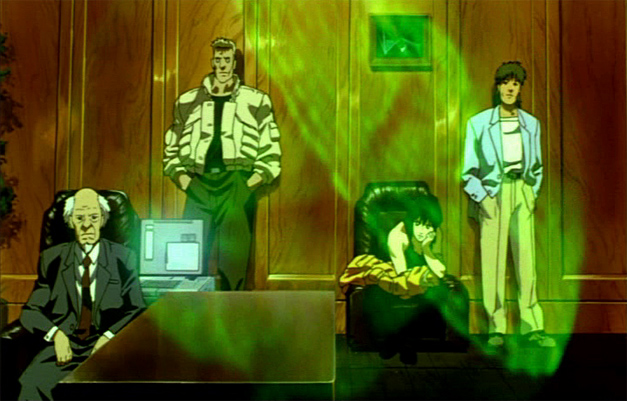
During the opening scene, it follows the same storyboard layout as seen from chapter 1, but some of the characters have been swapped out and replaced with primary characters so to get the plot moving right away. And at this point Section 9 has already been formed, so there is no part where we see the establishment of S9 occur. Again, no need to be filled in with unnecessary details as the story should be more about the case the team is trying to solve than focus towards the group itself. But for the sake of this article, let's actually focus on the group for a minute to point out that everyone from S9 is in the movie with the exception of the minor characters who act as backup like Saito, Boma, and Paz who are a no show (with the exception of a cameo from a character named "Saito" who is with the police force during one particular scene, but doesn't have his recognizable eyepatch like the Saito from S9 has).
To be more precise of what was pulled from the book, chapters 1, 3, and 9 were heavily borrowed and then injected with some original content made for the movie. Overall its story flows well and is actually the rare exception where I would recommend someone see the movie over reading the book as it does a better job at telling the story by cutting out a lot of the rambling in the dialog and discloses just the important items to move the story forward, kind of like hearing a story told by someone who mentions every unnecessary, miniscule detail about it compared to someone else who just sticks to the meat of the material.
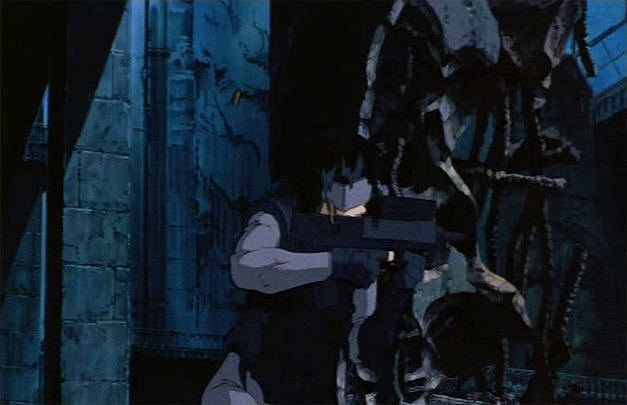
This especially holds true towards the end of the movie when it gets all philosophical on you. Not saying those parts from the manga were terrible, but for the film it cuts out a lot of the examples of what author Masamune was trying to convey to the reader to make it easier to follow. It's as if screenwriter Kazunori Ito gave the viewing audience more credit to follow what the Puppet Master was trying to tell Kusanagi regarding his reasoning to fuse with her ghost. From the entire film, this is probably what I appreciated the most.
Although that doesn't mean there's anything else to acclaim about. For the animation, it's done beautifully and very fluid. Aesthetically it's the same from what most anime films were like back in the ‘90s. You know, where faces are round for the most part. Where you can see the curvature of the eyeballs, where the pupils look dilated, and as if there's a spotlight directly above every character so it casts shadows below their cheekbones, nose, and hairline. As comparisons, Perfect Blue or Patlabor 2 are similar looking visual styles from the same era.
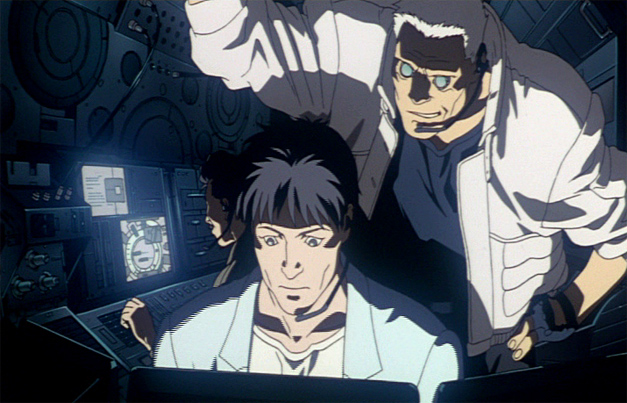
Action scenes are conserved, having mildly spoken dialog take center stage for most of the film. This is not a negative as they did a good job with the source material by having you follow the team around trying to solve the case. During these scenes, it was so well written in fact that when you combine it with the cinematography, I could see the dialog being used for a live-action movie, demonstrating that even though it's an animated feature, they still treated it as seriously as they would have with a live-action project.
And when there is action, they don't slouch on the quality there either. Every second of these scenes are animated very fluidly, as if they recorded people acting out the motions and having the artists sort of trace their movement (a technique referred to as rotoscoping). Lighting was also given a lot of attention and stood out the most during scenes when someone was driving, and where whenever they turned onto another street, the shadows would pivot to follow where the sun moved to. Then at night, streetlights would repeat the process of scanning over the vehicle and driver, bringing the scene to life with such accurate little details.
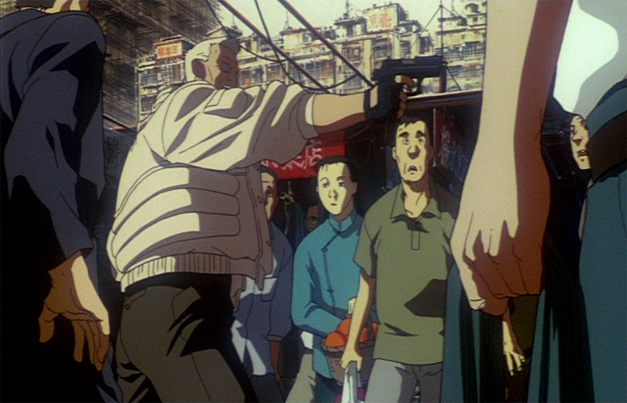
Even though it was not portrayed in the book, their choice to use Hong Kong as an inspiration for the design of the city was a wise choice. Like Hong Kong, there's one side of it where there are high-rise towers encased with glass, invoking power and money, while other parts of the city are slums, where the rivers are filthy, snaking around the narrow, multistory apartment buildings, evoking what a dirty Venice, Italy might look like. With these contrasts to the city, it allows S9 to fight two very different criminals: the types who wear suits and fight with laws and power, while the opposite being lowlifes who use guns and then dart into the narrow alleyways or crowed market places to try and make an escape.
Critics at the time gave high praises for Ghost in the Shell and I can understand why. For one it's the quality of animation with details based on examples I noted to earlier, bringing it on par with other major studios like Disney. But on top of that was a little bit of Pixar mixed in due to CG effects being blended in with the 2D hand-drawn animation, which was new for the time. Then there's the message the film was conveying to the audience that was probably something the US audience wasn't expecting to come from an animated feature.
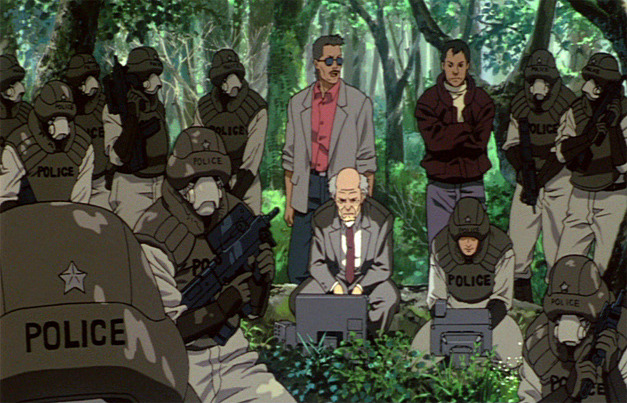
The thought of self-identity for a cyborg in the future where it feels like they're less than human, categorized into a subclass of humans can sure lead to an identity crisis. It may not have meant much back in 1995 when the movie was released, but it sure does resonate today when paralleled with what the transgender community is going through seen in recent current events. So, maybe as a celebration for recently passing the 21st anniversary of this film, they should re-release it in theaters highlighting this theme, so we can get a better understanding of one another and hopefully make this world a better place to live in. That, and to also see some really cool action scenes.
 |
Ghost in the Shell
Production: Production I.G |
Posted on: January 19, 2017
